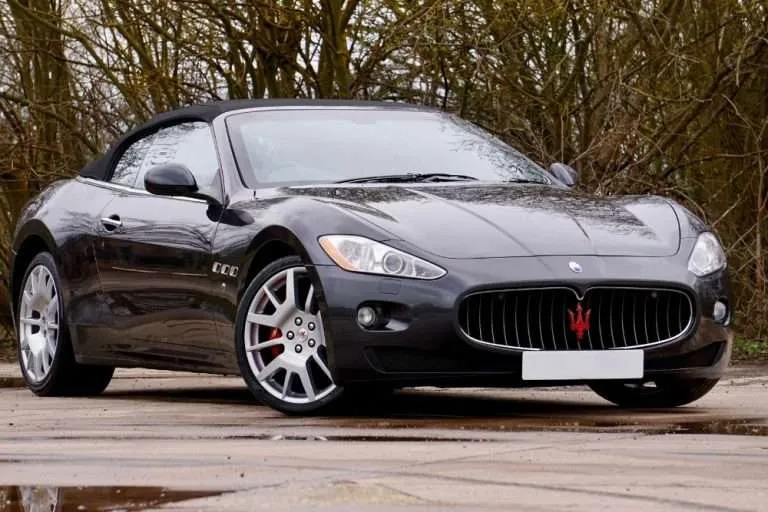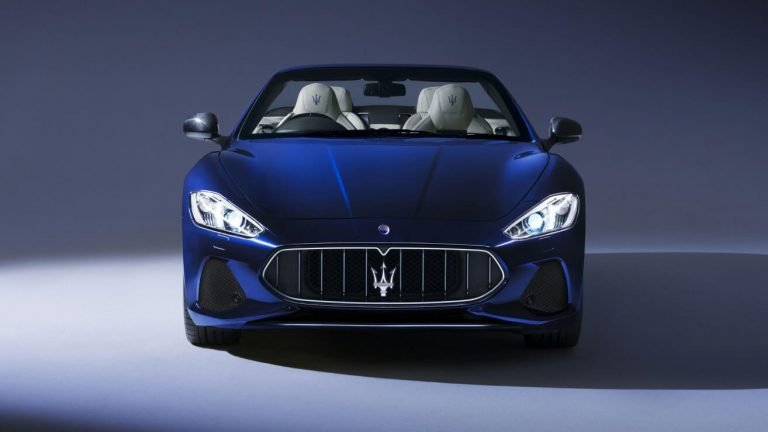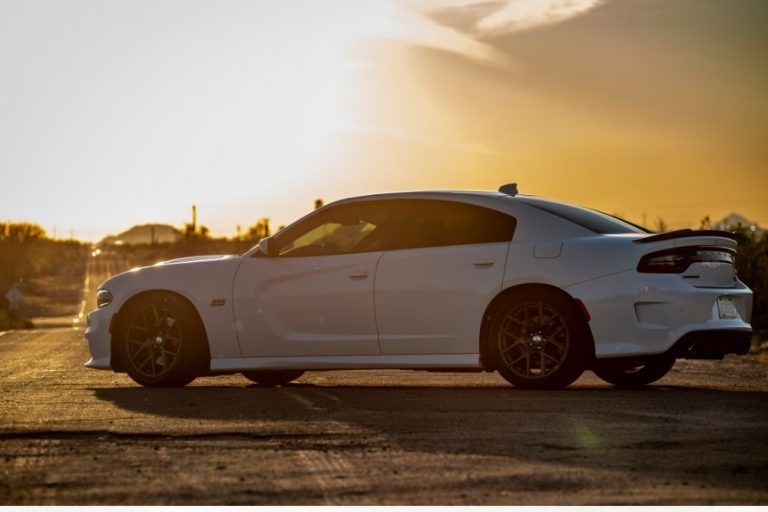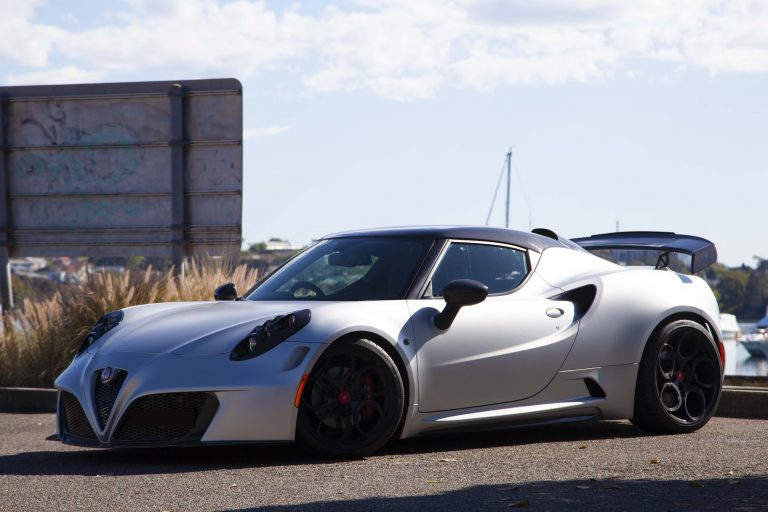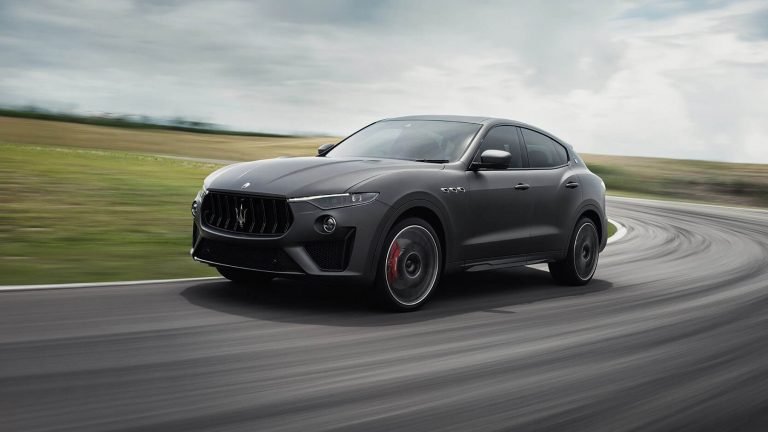2014 Maserati Ghibli Review- Trident Enters the Executive World
Maserati’s introduction of the Ghibli, a miniaturized version of their Quattroporte VI, would mark several key decisions for the Modena carmakers. The model had initially been unveiled during the 2013 Shanghai Motor Show and heralded Maserati’s return to mid-size luxury car production. This was a segment that they had been absent from for 20 years, since the discontinuation of the Biturbo. Maserati would use this new model to resurrect a name that had been synonymous to one of their great automobiles of the 1960’s.
This year would usher in the centennial anniversary for Maserati and they had big plans to take the exclusive Italian carmaker onto another level entirely. After the success of the introduction of the GranTurismo, in 2007, and the innovation of their large luxury sedan, Quattroporte, Maserati now looked to the lucrative executive sedan market. This was an area that had been dominated by the German carmakers of Mercedes-Benz, BMW and Audi. Not an easy task for a manufacturer of exotic high-performance sports cars but they felt bullish enough to try.

The driving force behind this decision was to increase sales of the Modena carmaker to levels unheard of before. They wanted to achieve a production target of 50,000 by 2015. The previous year had seen car sales more than double as 15,393 were sold in 2013 in comparison to just 6,288 in 2012. The big jump was caused by both the new Quattroporte VI and the Ghibli had gone on sale. 2014 would see these numbers double again as 36,448 units would be sold which included 4,238 units of the 2014 Maserati Ghibli. It seems that Maserati’s gamble, on creating a sub-100K automobile that would have the allure for the buying public, had paid off. The chance to own one of the Modena Tridents, that sported a Ferrari engine, was just too good an opportunity.
What’s in a Name?
It was probably no coincidence that Maserati decided to name this brand-new model with a moniker they had not used for 46 years – the Ghibli. In 1967, Maserati produced a Grand Tourer designed by the coachmaker, Ghia, which is widely regarded as the last great automobile that Maserati manufactured. So, it would seem that they were pinning great hope on the quality of the new Ghibli.
Engine of a Prancing Horse
Engine requirements for the 2014 Maserati Ghibli would be quite different from their other models. This would not have the same output as fuel economy and fuel variations would need to be considered. So, there were three different types of engines to choose from though all were 3-liter V6. This included two petrol engines that were both twin turbocharged.
The Base model had an output of 325 bhp at 5,000 rpm and 369 lb-ft of torque which allowed it to make 0-60 mph in 5.6 seconds and having a top speed of 163 mph. The Ghibli S & S Q4 has greater performance with 404 bhp at 5,500 rpm and 406 lb-ft of torque that sees the car making 0-60 mph in 5 seconds and hitting a maximum of 177 mph.
But due to the high demand, within this sector, Maserati would have to do something they had never done before – putting a diesel engine into one of their cars. This would pose some serious problems for ‘The Trident’ as diesel engines were not known for having high performance. So, Maserati would, once again, turn to a Ferrari expert for assistance – Paolo Martinelli. This was the engineer that oversaw the V10 engines of the Scuderia Ferrari team for Michael Schumacher, who was winning Championship’s year after year.
What he devised would be a diesel engine of some repute, a 3-liter turbo V6. With 271 bhp at 4,000 rpm and 443 lb-ft of torque that allowed the car to reach 0-60 mph in 6.3 seconds and a top speed of 155 mph.
While most models are rear wheel driven, the S Q4 is fitted with an all-wheel drive system. The power-on-demand setup delivers 100% of torque to the rear axle when the car is cruising but, in certain conditions (when launching, for instance), 50% of the power will be shifted to the front wheels.
Executive Shift
The gearbox would be delivered by the manufacturers from Germany, ZF. All models would have the same transmission which was the 8-speed 8HP automatic. The transmission has three different driver settings – Normal; Sport & ICE. Quiet urban driving is best on the first setting though, similar to the GranTurismo, the Sport setting for a more aggressive motoring experience. This allows quicker shift changes in a higher rev count, the throttle is remapped to make it more edgier and the baffles on the exhaust are bypassed to bring out more of the growl of the Ferrari V6 engine.
The gear stick can be utilized in a manual mode, by flicking up and down through the gears, or by the use of the paddle shifters set on the steering column (though these are not standard).
The last setting, ICE (Increased Control & Efficiency), functions like an ECO mode and reduces the engine and transmission for greater efficiency. Reigning in the power of the 2014 Maserati Ghibli would better serve the slow urban driving and increase its fuel efficiency of 12 mpg.

Road Warrior
Maserati prides itself in delivering motor cars that are thrilling to drive and the 2014 Maserati Ghibli is no exception. The automobile grips the road well and has only very little understeer when attacking corners at speed. The weight balance of the chassis is almost 50/50 front to back which helps the car maintain its position of where the wheel is turned.
When driving in Sport mode, the corners and tight bends can be taken at high speeds and exit them with a good deal of confidence. Driver assistance aids are installed as standard to ensure that the exhilaration of high-speed driving does not get too exciting. These include stability and traction control as well as anti-lock brakes.
However, the lightweight feel of the steering has been criticized, as some drivers felt they had lost the feeling of the 18-inch wheels and the road underneath them. Another criticism of the Ghibli was the standard suspension that was too firm and made for a bumpy ride on some surfaces. A better set-up is to invest in the adaptive ‘Skyhook’ suspension system. This will ensure a smoother ride and a reduction in body roll when you are throwing the car around corners.
Similar Lines
The 2014 Maserati Ghibli bodywork takes its base from the Quattroporte VI but it is almost one foot shorter (11.4 inches) while the wheelbase has also been shrunk by 8 inches. There are even close similarities to the GranTurismo, with the sweeping body contours and curved wheel arches and distinctive triple side ports beside the front wheels, though the Ghibli nose is not as aggressive as the GT.
Compared with the ruthless efficiency of its Teutonic rivals, the seductive Italian panache is by far the most alluring executive sedan on the market. Coupled with the throaty growl, pop and bang of the Ferrari engine under the hood, emitted from the quad exhaust pipes, makes this sedan the standout amongst the rest of the executive fleet.
The four-door sedan offers cabin space for five passengers. The front seats are extremely comfortable and supportive in the lumbar regions while the rear seat has decent headroom, for adult occupants, though the foot space is very tight behind the front seats. Trunk space is a very roomy 17.7 cubic feet and there are options to fold the back seats for extra room.
Executive Level
Maserati’s distinctive high end interior finishing is on display in this new executive sedan as it wears its Italian cache with pride. All surfaces and textures are sumptuous in leather, wood or carbon fiber and covers the entire dashboard, central panel, steering wheel and side panels. To give the interior more of an exotic touch, the dash leather can be installed in a two-tone combination.

But there were grumbling from many quarters regarding the knobs and buttons that were of a sub-standard. While the Modena carmaker had ensured the best quality surfaces to be fitted in the cabin, the 2014 Maserati Ghibli was fitted with a lot of equipment that came from their generic supplies from their parent company, FIAT Chrysler.
Executive Touch
The 2014 Maserati Ghibli would be fitted with the inhouse Infotainment system, Uconnect. This worked from an 8.4-inch touchscreen that encompassed all of the interior controls for entertainment, satellite navigation and climate control. All of these could be accessed through large icons on the bottom of the screen and worked much simpler than some of its rivals.
The radio picks up both satellite and terrestrial channels as well as having a CD player. There are USB and auxiliary ports for connectivity although Bluetooth is not standard. The Surround Sound System either has the standard Harman Kardon eight speaker set up or an upgraded 10 or 15 speaker system from Bowers & Wilkins.
Other features include: bi-xenon headlamps (while the S Q4 has adaptive headlamps); keyless entry/ignition; cruise control; dual zone automatic climate control; six-way power front seats; a tilt and telescoping steering wheel and a rearview camera.
Customization is available inside and out with a variety of wood, carbon fiber and leather trim. The 18-inch wheel rims can be enlarged up to 21 inches while the S Q4 has the option of having wider rear wheels and tires. The Brembo brake calipers are available in multiple colors too.
But these upgrades did not come cheap. While the Base 2014 Maserati Ghibli retailed at US$66,900 and the S Q4 is sold at $76,900, the added installations can push the price up by another $25,000. The upgraded sound system costs $5,100, luxury upgrade of the interior adds on another $4,220 and the exterior upgrade will set you back a further $8,830.
Trident Rivals
With a fully loaded 2014 Maserati Ghibli S Q4 hitting $100,000, this put the Trident Executive Sedan into some serious competition. At their base price, the Ghibli was up against the BMW 5 Series, Audi A6 and the Mercedes E Class. All of these models were strong examples of the motoring segment and were fitted with a better grade of technology. With the more expensive Maserati, they were now challenging the upgraded equivalents – BMW 6 Series, Audi RS 7 and the Mercedes CLS.
While all of these cars were probably a better buy due to their overall cost, (perceived) reliability, standard technological features – they were not a Maserati. These competitors were widespread and quite common on the road while their common Teutonic styling was becoming homogenized throughout. The fact that the Italian maker of exotic sports cars were now offering a very different choice within this market proved to be exciting. And none of the competitors had the same engine growl as the Ferrari engine that was sitting under Maserati’s hood. The Ghibli would offer its owner high levels of luxury, performance and exhilaration which was maybe lacking in some of its Germanic rivals.

The public’s reaction to the 2014 Maserati Ghibli proved that this was the case. The intoxication of driving an executive sedan with a Trident on the front grille was just too much to resist. In the previous year, 2013, when sales of the Ghibli had not had the chance to be widespread, they shifted 339 units. But by the following year, with production in full flow, these numbers had soared to 4,238 worldwide. The following year it would balloon again with sales reaching over 12,500, which included 7,925 in the United States alone.
This was key, as America was the market, they were targeting most of all A major business factor for Maserati was to break into North America and rapidly increase their production levels. This was the purpose of the Ghibli and it was doing its job perfectly.



